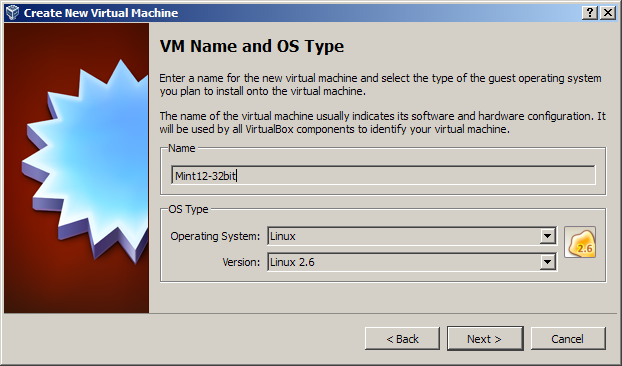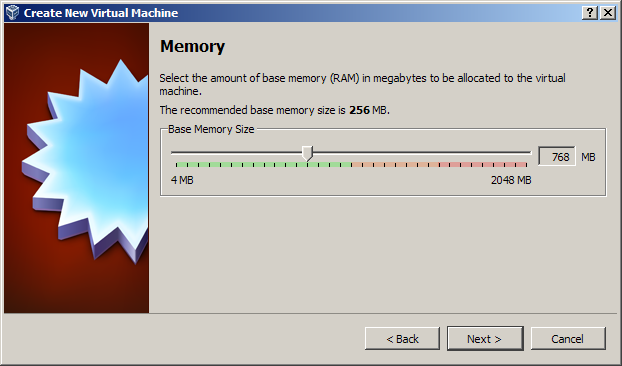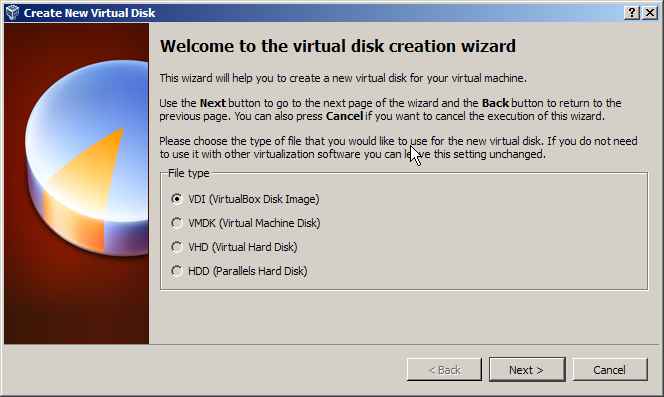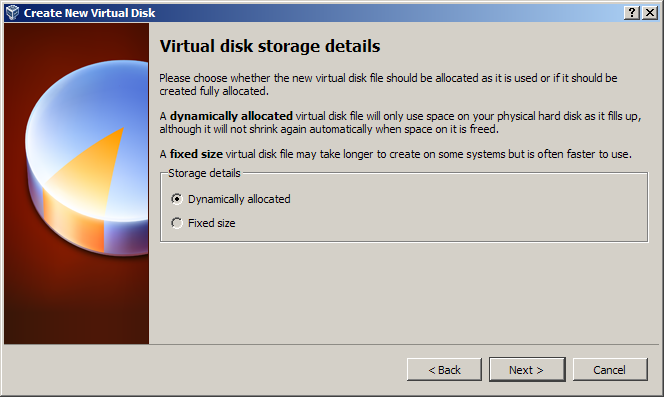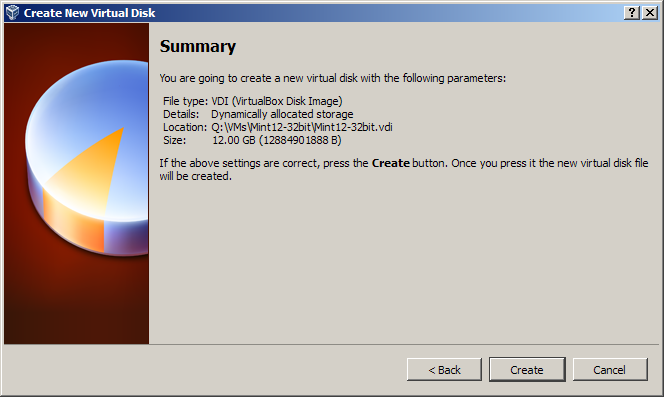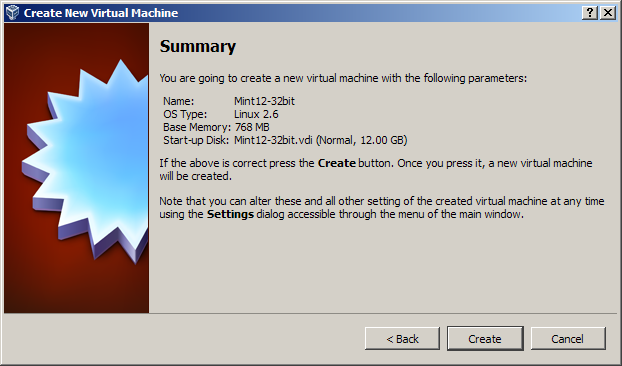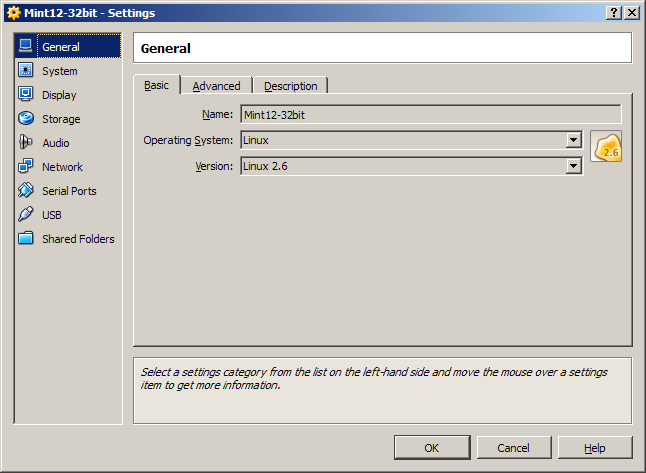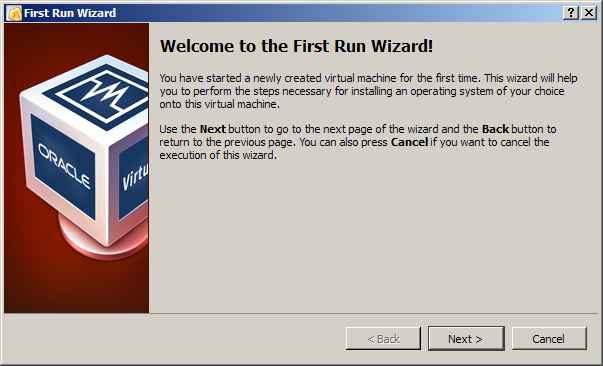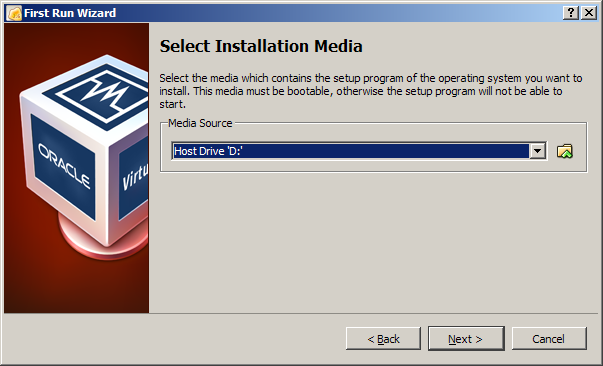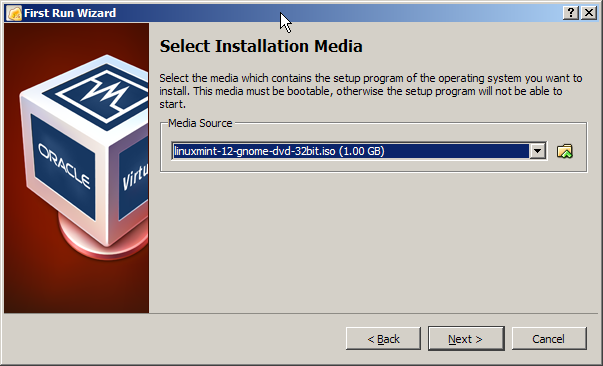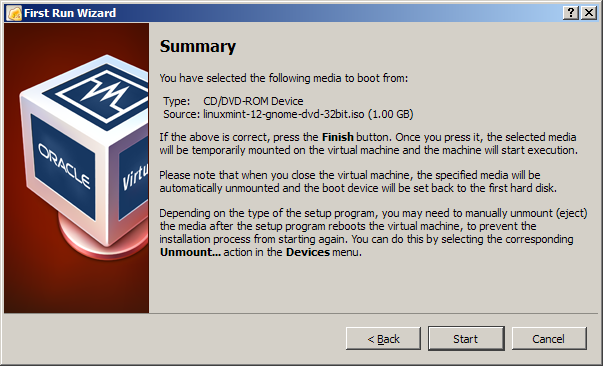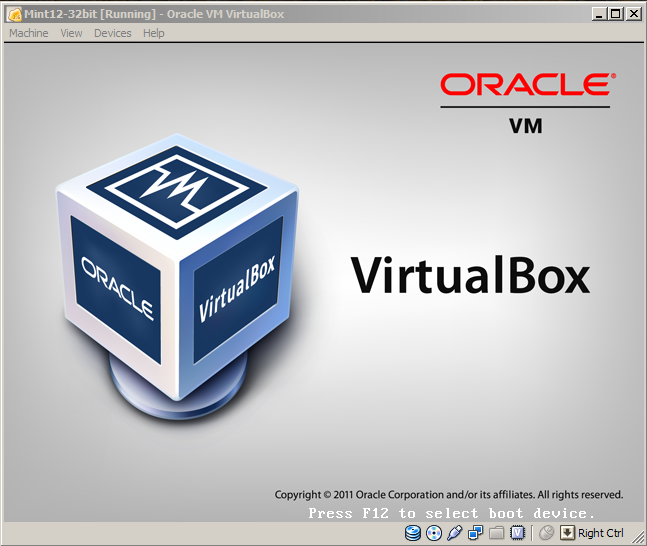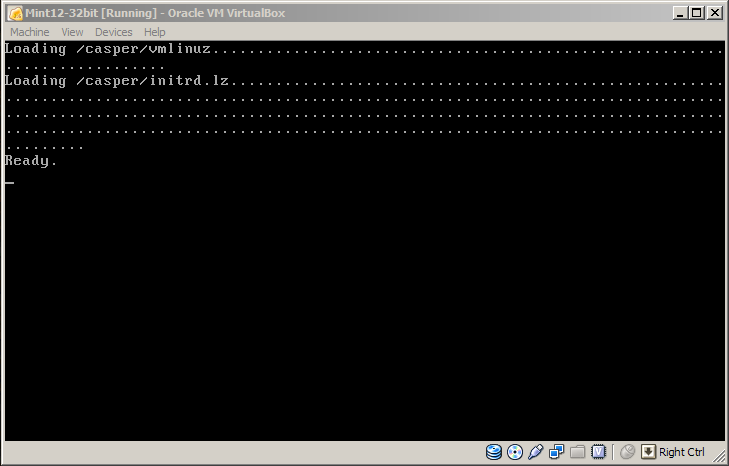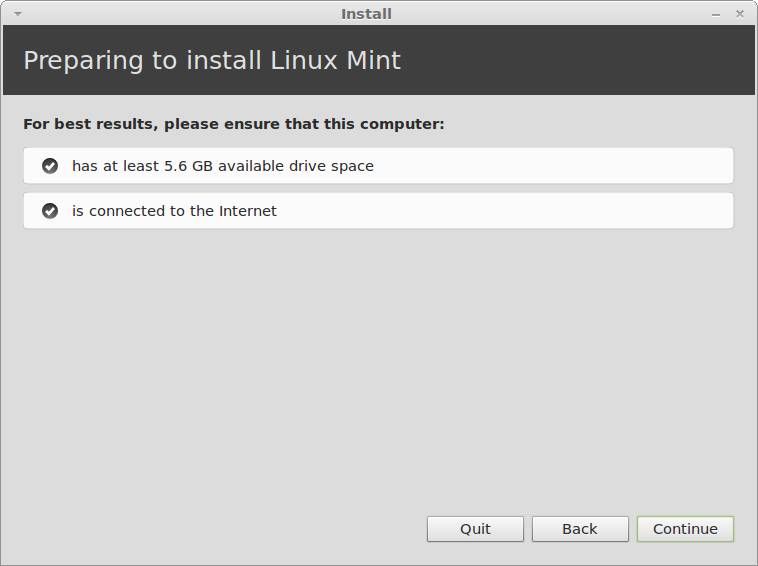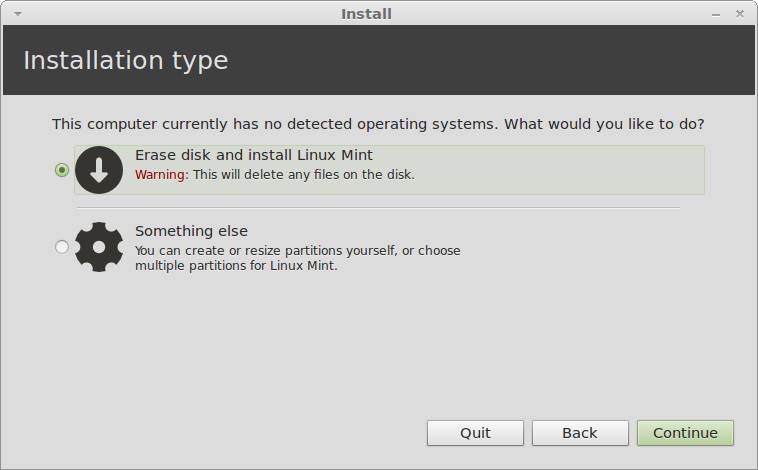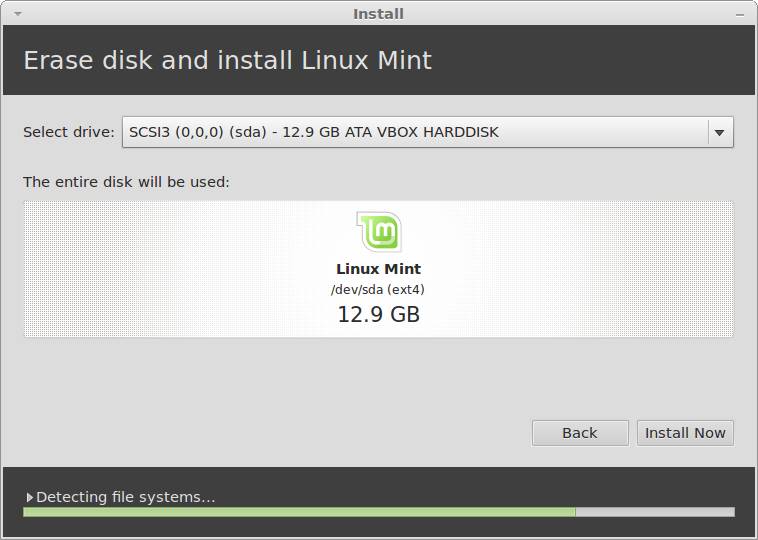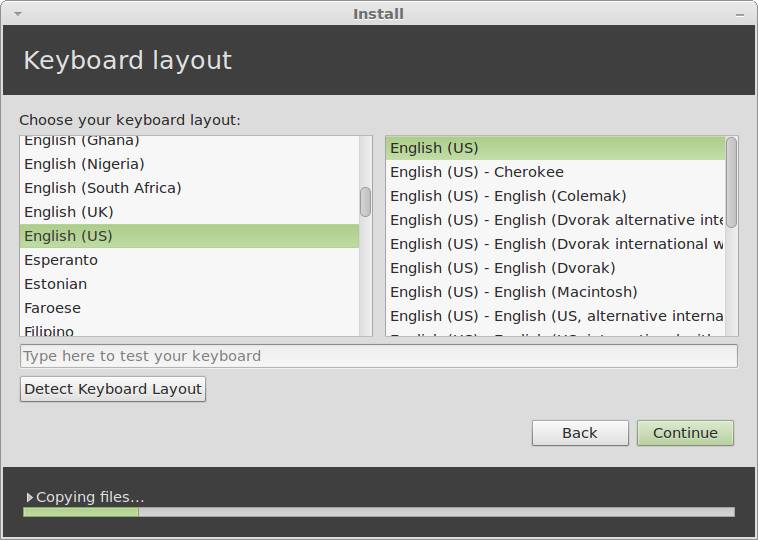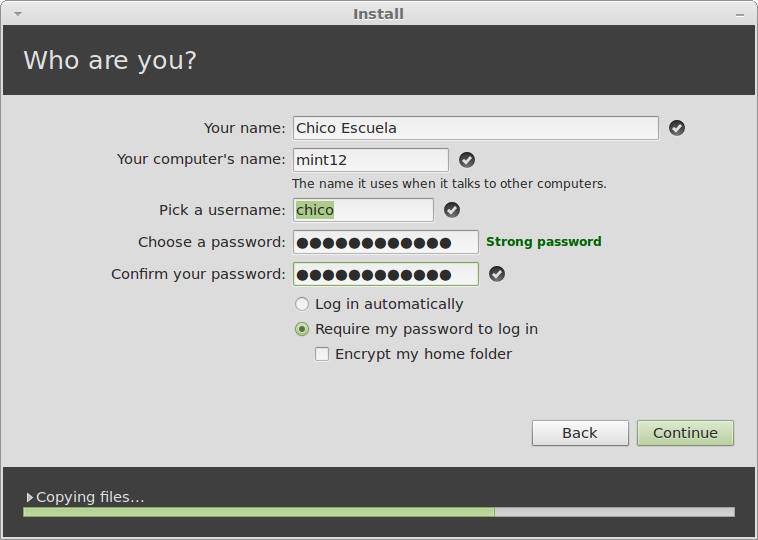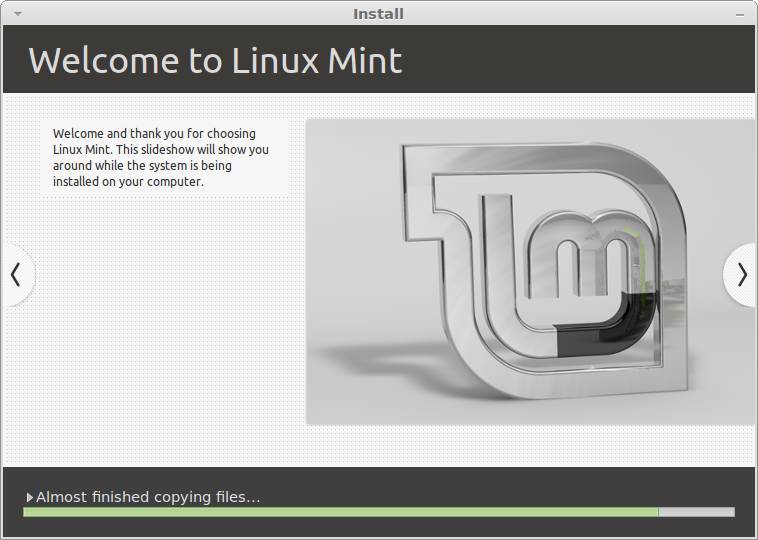This tutorial is a little old and uses an older version of VirtualBox. It also shows you how to install
Linux Mint 12 (Lisa) 32-bit in it. If you are using a newer version of VirtualBox and installing a
different version of Mint or a 64-bit version (most likely),
all of the information is the same, but instead of seeing "12" and 32-bit, as in the screenshots below,
you will be seeing your version number and/or 64-bit.
Update: In order to get VirtualBox to work with 64-bit (and some 32-bit) virtual machines,
you must enable virtualization in the BIOS on the motherboard. How you do that depends on the
motherboard (vendor) that you have. Here is a
video that demonstrates how to do it
on an Asus motherboard. Your motherboard may be different, but the steps will likely be similar.
If you don't know what BIOS you have, you may have to Google for your motherboard.

